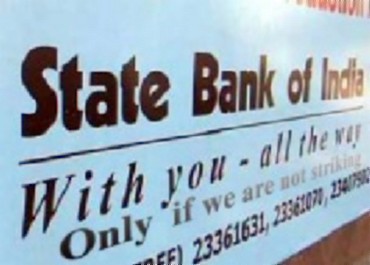 Standard & Poor's on Wednesday lowered the stand-alone credit profile of two government-owned lenders- the State Bank of India and Union Bank of India citing concerns over their asset quality and high credit cost.
Standard & Poor's on Wednesday lowered the stand-alone credit profile of two government-owned lenders- the State Bank of India and Union Bank of India citing concerns over their asset quality and high credit cost.
"We revised the stand-alone credit profiles of SBI and Union Bank of India because we expect the banks' asset quality to remain weak and credit costs to stay high," said S&P in a note. The international ratings agency expects the banks' asset quality to remain stressed in the financial years 2012-13 and 2013-14 partly due to continued slippages in their restructured loan books.
The stand-alone credit profile of SBI has been lowered to 'bbb-' from 'bbb' and that of Union Bank of India has been lowered to 'bb+' from 'bbb-' level.
Basically, the credit profile of a bank reflects its stand-alone ability to repay the funds borrowed. The credit rating of a bank is arrived after taking into account its stand-alone credit profile and other factors affecting its performance.
In these cases, high probability of government backing has come to the banks' rescue since their long term credit ratings have been affirmed at 'BBB-' level.
"We believe that there is a very high likelihood that the government of India would provide timely and sufficient extraordinary support to all these banks in the event of financial distress," said S&P.
SBI's gross non-performing loans (NPL) ratio of 5% (on a stand alone basis) as of June 30, 2012, is the highest among the Indian banks that are rated by S&P.
The ratings agency noted that SBI's mid-corporate and agriculture portfolios are particularly stressed. While Union Bank of India's NPLs in agriculture have surged, the bank's exposure to power sector also faces challenges such as fuel shortages, delays in environmental clearances and slow pace of tariff reforms.
S&P also affirmed long term credit ratings of Bank of India, IDBI Bank, Indian Overseas Bank, Indian Bank and Syndicate Bank at 'BBB-' with a 'negative' outlook. The stand-alone credit profiles of these five banks stand unchanged.








 © 2025
© 2025